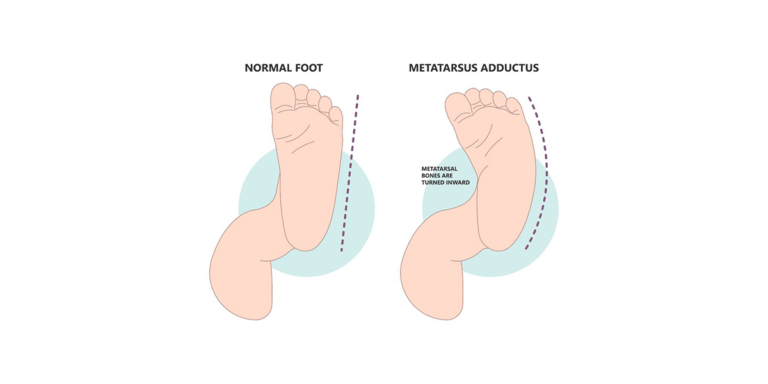Baby Teething Food: Safe Options to Ease Discomfort
- Dr Owais Rafiq
- November 8, 2024
- 3:28 pm

Teething is a natural experience for babies, but sometimes it can be painful. On average, infants begin teething around 4 to 7 months and by the age of three, have 20 “baby teeth” in total.

There are many symptoms of teething, including low fever, drooling, and something urge to chew hard things.
When infants are going through this difficult phase, they might find eating difficult. In this article, we will discuss safe baby teething food options to ease their discomfort and talk about soft food that is suitable for little ones.
Let’s get started!
Why Food Choices Matter During Teething
As babies begin teething, the pain they experience may affect their appetite, mood, and general well-being. Teething typically occurs with a series of symptoms that range from sore and swollen gums to irritability and drooling.
This stage is where proper food selection of baby teething food becomes very important to help them cope with discomfort, nourishment, and even healthy eating.

Here’s why thoughtful food selection matters at this stage:
1. Soothing and Numbing Sore Gums
Teething causes very sore gums due to the pushing of new teeth through the surface. Some of the cold or soft foods are naturally soothing and numbing to the gums.
The cold fruit slices or yoghurt soothe the mouth, making it comfortable because the cold temperature is a natural numbing agent.
Giving a baby the right texture and temperature helps him with irritability and makes him feel better.
2. Providing Comfort and Distraction
Teething is not only painful but also leaves a general discomfort in the bodies of babies. Therefore, you relieve them by giving them different baby teething food since that will keep them busy in terms of attention and will give them comfort.
Chewing gives babies, a healthy way of coping with the discomfort of this sensation, making them seem to be in control.
Foods, such as carrot sticks, can be used under supervision; this gives them something to focus on as the pressure on their gums is safely eased.
3. Encouraging Self-Feeding and Oral Development
The ease of pain caused by teething is further achieved through the provision of teething-friendly foods, which also promotes self-feeding as an essential skill during this stage.
Different textures of food help babies develop their skills and teach them how to chew, bite, and hold food.
The best foods in this respect are those with a mild flavor and softness, such as cooked vegetables or soft fruits.
It stretches the muscles that are crucial to chewing and later to producing speech sounds, thereby toughening them to new food entries along development.

4. Minimizing Irritation from Flavors or Additives
While choosing a baby teething food, it’s essential to avoid strong flavors, added sugars, or artificial ingredients.
Babies’ gums are highly sensitive during this period, and certain ingredients may irritate them further.
Plain, natural foods not only reduce the chance of irritation but also expose babies to wholesome flavors, helping them in developing a preference for natural, unprocessed foods as they grow.
Simple foods like plain yoghurt, mild cheese, and unsweetened apple sauce can be soothing and gentle on their tender gums.
Best Types of Teething Foods
Choosing the right foods during teething can make a world of difference for a baby experiencing gum pain and discomfort.
The best teething foods not only soothe and distract but also provide essential nutrients.
Here’s a breakdown of the most effective types of baby teething food, from cold, soothing options to gentle chewing foods that offer relief while supporting healthy eating habits.
1. Cold and Chilled Foods
Cold foods are ideal for teething babies because the chill numbs the jaw naturally and, therefore, relieves the pain from the gums; these foods are refreshing and easier to prepare as well as soothing.
Examples: Chilled fruit slices, for example, banana, apple or pear. They are soft enough for little gums but firm enough to provide a gentle massage.
2. Soft Foods for Gentle Chewing
An unsatiated baby with sore gums prefers foods that require little chewing effort, but still needs to practice chewing. Soft foods are ideal because they neither irritate the gum nor cause the baby any discomfort while trying to further discover different oral motor skills.
Examples: Steamed carrot or broccoli sticks, ripe avocado or mango chunks, and mashed or lightly pureed sweet potato or banana.
3. Challenging Foods for Gum Rubbing
For babies that love to bite and chew during teething, sometimes tough foods are what they want to get the resistance that they need. They will rub their gums on the foods, which might even help them feel better due to the release of pressure.
Examples: Whole peeled carrot sticks, cucumber sticks, teething biscuits or rusks.
Make sure these food items are firm in order not to break up easily-off when the baby bites hard so as not to pose a threat for choking. Parents can also chill these items for soothing effects.
Homemade vs. Store-Bought Teething Foods
Choosing homemade teething foods also gives parents the leverage of controlling the ingredients; their baby’s food won’t have added sugars, preservatives, and artificial flavors.
Parents can choose flavors and textures to give to their babies as long as they are in chill slices of fruits, stick vegetable, or popsicles of yogurt.
Store-bought teething foods are convenient, especially for busy parents who may not have time to prepare fresh options daily.
Many of the available teething biscuits, rusks, and yogurt melts are made to dissolve easily when they get wet to minimize the potential for choking, and several are minimal and made of organic ingredients; however, make sure that they are not filled with extra ingredients, sugars, or artificial colors.
Important Safety Tips for Teething Foods
- Always ensures that the food for teething is of ample size and texture for your baby’s age and developmental state.
- Do not give foods like small hard foods because there is a risk that they might break up and become chunks; opt for large teething biscuits, firm whole fruits or vegetables for safe gnawing.
- For younger babies, give soft foods as steamed fruits or vegetables and which can be broken down to minute pieces.
- Serve chilled foods like yogurt or soft fruits to comfort, but not so cold that they shock sensitive gums.
- Do not cut foods too small if they are to be gnawed on; instead, use larger pieces that are easy to hold.
Conclusion
Choosing the right baby teething food can make a big difference in helping babies find relief from gum discomfort while still supporting their nutritional needs.
From chilled fruits that soothe, nutrient-dense foods that are gentle on sore gums, there are many safe and effective options for easing teething pain. Homemade foods allow for ingredient control, while high-quality store-bought items offer convenient choices.
Parents should create a comfortable yet healthy experience for a baby who is teething by following safety guidelines, selecting age-appropriate foods, and monitoring the baby during feeding and avoiding artificial additives.
Dr Owais Rafiq
Subscribe to Dr Owais YouTube channel
For parenting advice, child health, symptoms, causes and treatment of illness in children.





